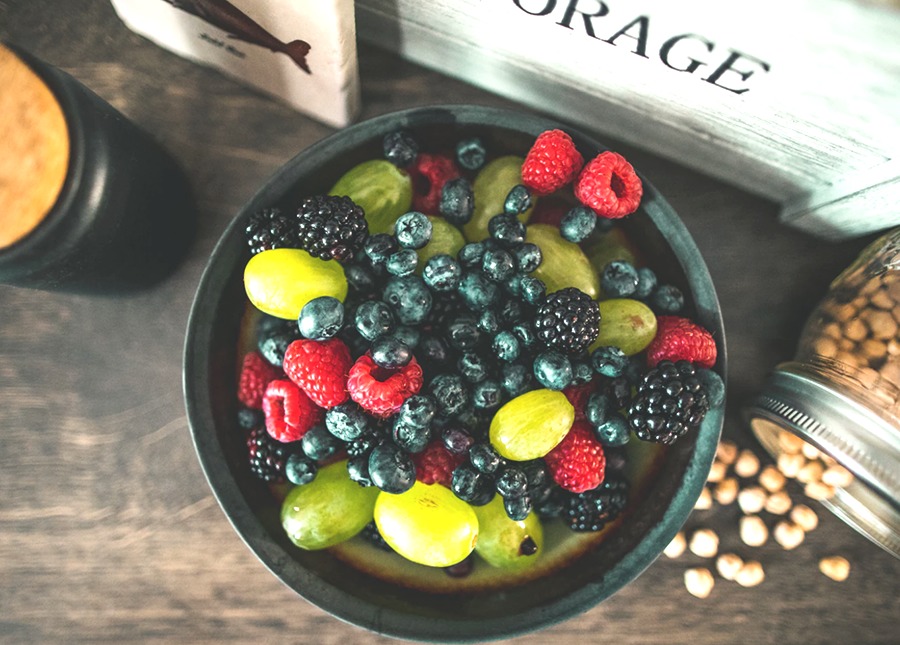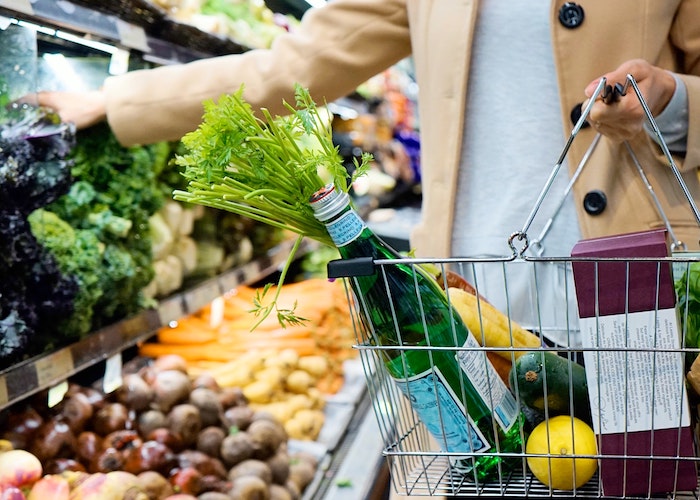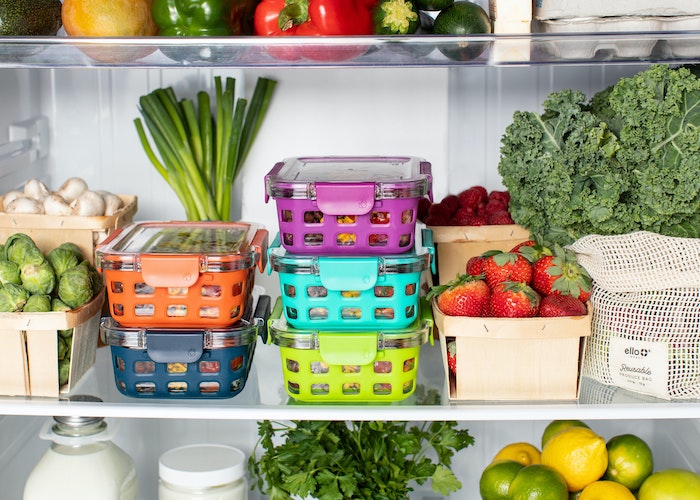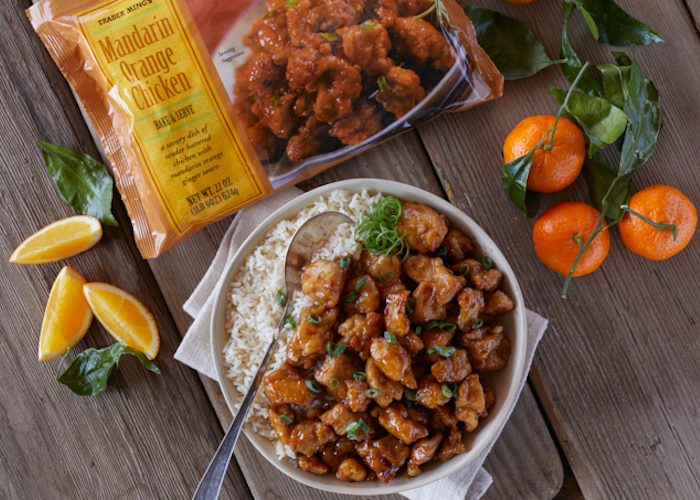How I Keep My Grocery Budget Under $200 A Month In Brooklyn

When a lot of people I talk to about food budgeting hear that I spend $200 or less a month on grocery shopping, the assumption is usually that I only eat cup-o-noodles, because there just wouldn’t be a way to spend that little otherwise. But, as I previously wrote in my piece about living in Brooklyn on an approximate budget of $2,600 a month, that’s not the case at all.
I actually eat quite well, manage to cook a lot, and meal prep one or two meals every week so that I have lunches and dinners for the week. I don’t ever starve, and I always have enough food even with spending so little. Of course, not all of my meals are elaborate or fancy, but I’m not bothered by that.
The breakdown and rules I follow, which basically guarantee I’ll spend as little as possible on groceries every month while stilling eating well and enjoying a lot of awesome meals, are actually pretty straightforward.
1. I have a master list of all my staples, and foods and meals I eat and enjoy the most.
A tactic I’ve found that personally helps me spend less on groceries and food in the long-run is keeping a record of staples I need in my apartment, as well as a list of my go-to foods and meals and things that I enjoy eating the most. I keep this master list both in my phone and in my bullet journal, and basically just make sure that I have the ingredients in my cupboard or fridge at all times, at the bare minimum. Some of these staples include oatmeal, brown rice, quinoa, eggs, chicken breast for freezing, bread, tomatoes, avocado, frozen fruits like raspberries and cherries, some form of lettuce or salad mix, sweet potatoes or potatoes, lentils, black beans, chickpeas, coconut milk, almond milk, hummus, chia seeds, and spices.
These are essentially the bases for most of my meals, and most other things I buy just end up being extra treats, or extra ingredients I add onto these staples. And although these staples might not work for everyone, figuring out your own consistent staples that you can make multiple kinds of meals from should only cost one person between $50-$100 a month — yes, even with produce. My staples generally cost me about $50 each month, and take care of a huge part of my food needs. That way, the rest of my grocery money can go to more elaborate meals.
Every time I make a large salad with different veggies and some kind of protein, it essentially costs me less than $5 to put it all together. Other go-to meals of mine include curries, because that’s what I grew up on. During the summer, I’ll make spicy green curries, and in the fall and winter, I’ll make pumpkin curries and other hearty, autumnal curries, and they’re still pretty much as cheap as a salad. A can of pumpkin puree is about $2, a can of coconut milk is also about $2, a can of chickpeas is $1, and any other vegetables I’d like to put in wouldn’t amount to much more than $5. That’s about $10 to make enough food to last me for five or meals for a week, all for about $15 if you add in the 3-lb. bag of brown rice I always have on hand to be the base of curries and other protein bowls.
Having these lists and knowing these things helps me plan out what I want to get when I go shopping and helps me keep my spending in check. I guarantee that curating your own list of staples could do the same for you.
2. I write down all my groceries I buy right after I buy them, then plan out what I need to use up and what meals I could put together.
Whether I’ve just done a huge weekly haul for groceries on a weekend or have just picked up a few items from the store for dinner, I always check my receipts and write down everything I’ve bought in my “Bought week of XX/XX” page in my bullet journal. Doing this helps me to start thinking about the meals I can put together for any given week or month and keep track of what I still need to use up or have already gone through.
For example, a few weeks ago I made a Vietnamese noodle salad, and substituted tofu for shrimp in the recipe. Ultimately, the ingredients for that meal cost me about $15 total out of my weekly grocery budget. It was an extremely delicious meal, really simple to put together, and obviously not expensive at all. Plus, it was a dish that I would have gotten at a restaurant or something, but would have probably spent nearly $20 on if I’d gotten it while out to eat. The ingredients included lettuce, rice noodles, a teriyaki ginger garlic sauce, mint, cilantro, basil, carrots, tomato, bell pepper, and shrimp. And because I had everything left over afterwards, I made it multiple times that week. When I was done with some of the ingredients or tired of having that, I used the leftover shrimp and basil for other dishes like pesto shrimp pasta, and basically all of the other ingredients including shrimp for spring rolls.
That’s three different meals for the price of basically $15, and the time to figure out how I could stretch the same ingredients out to be used for different things, as well as the patience to cook it all. If you can take the time to plan, even if it requires waking up slightly earlier one day, you’ll end up making a lot of meals you thought you might only be able to get at a restaurant for way more. Even better, you’ll surprise yourself by figuring out all the ways you can make delicious things for cheaper, that are much more satisfying than spending $20 on a few frozen meals for the week.
Different things work for different people. Maybe you’re the kind of person who needs to pick up a few items at the store every other day instead of doing a huge grocery haul on the weekend. Or maybe you’re more like me and it would be helpful for you to plan out most of the meals you can make for the next week, and buy those things on one fell swoop. And even if I don’t have all of my plans made or know exactly how my week is going to go, having a general idea of what my time is going to look like actually helps me save money and not waste food.
3. I stick to my golden rule: I don’t buy anything if I’m not truly going to use it.
My number one rule that applies across the board and not just to groceries, which saves me a lot of money, is if I’m not really, truly going to use it, I’m not going to spend money on it AT ALL. Although it sounds relatively simple, it really keeps my grocery budget, and all other budgets, low. A lot of this mindset simple revolves around planning, and just requires me to be honest with myself about how much time or interest I have in actually cooking something. I won’t buy something unless I know I’m going to use it — even if I’m craving something specific.
Taking an honest look at the way you spend your time and the kinds of things you buy will help you figure out what you’re actually going to make, what you’re really going to eat, and what’s better to spend money eating out on versus making in your own kitchen.
4. I’m not disillusioned by the idea that everything I eat will be straight out of a Delish video.
I think the thing that really gets in many people’s way is the black-and-white idea that cooking either has to be very fancy and expensive and require a lot of ingredients, or that you’re making something out of a box and heating it up in the microwave. But the truth is, it’s much easier to figure out a diet for yourself and eating habits that fit into your lifestyle without having to go to one end of the spectrum or the other. It’s been said before, but cooking really doesn’t have to be fancy or complicated. And it doesn’t have to cost you excruciating amounts.
Like I said, sometimes I make simple salads or protein bowls, and sometimes I make homemade pesto pasta with shrimp, or I make even more delicious things from leftovers. However, most of it comes down to setting realistic expectations about what I can eat at home and what’s better left for ordering elsewhere.
*****
At the end of the day, not everyone lives in a city where affordable food is accessible, and not everyone likes to dedicate the amount of time I do to cooking. But if you’re living somewhere like New York and looking to figure out how to cut down your grocery budget, or even how to allot your grocery spending and food spending differently, sticking to some of these rules could be useful. My advice is to find what works for you, plan things out, and set reasonable expectations. Find a balance between eating out, ordering food, and cooking. Sticking to the planning part, which is the most important aspect of all of this, is not simple and takes a lot of time to develop the habit. But the best thing you could do for yourself and your grocery budget is cultivating that habit. Your stomach, and your wallet, will thank you.
Elly is a New York-based writer and communications strategist who works very hard to feel worthy of eating lox bagels for breakfast. Primarily, she’s Brooklyn’s resident pun enthusiast. Read more of her writing here, or follow her on Twitter.
Image via Unsplash
Like this story? Follow The Financial Diet on Facebook, Instagram, and Twitter for daily tips and inspiration, and sign up for our weekly email newsletter here.




